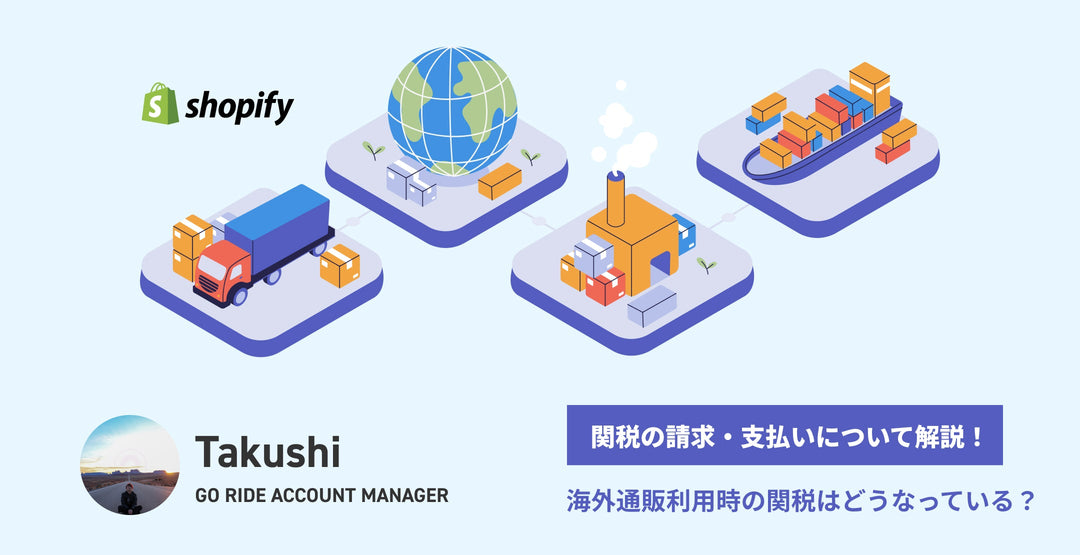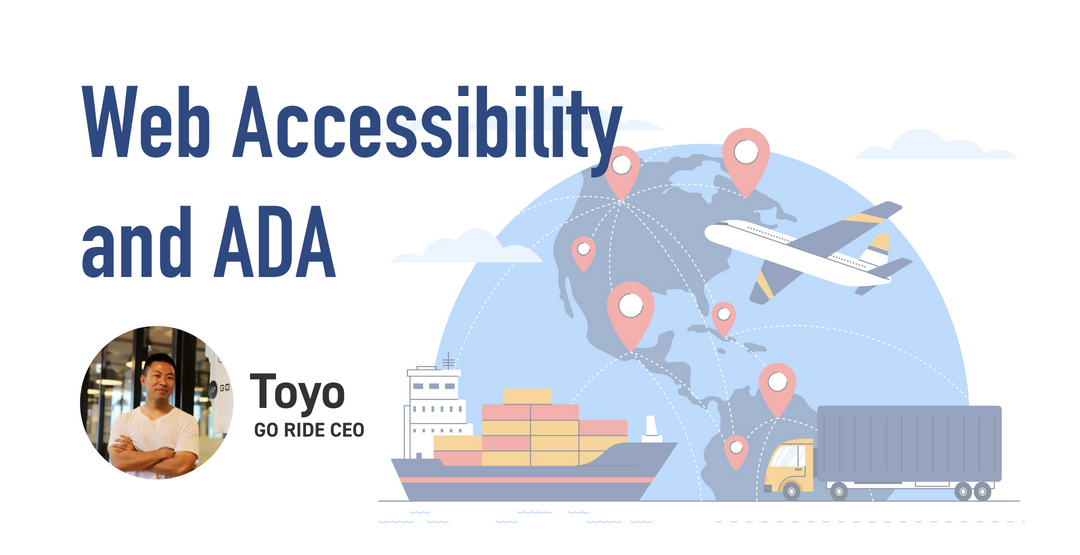Explain the shipping fee and tariffs that you should keep in mind in the cross -border sub -school!
近年、国境を越えてサービスや商品を提供する「越境サブスク」が注目されています。海外の顧客獲得や売上拡大につながるため、多くの企業が参入しているのです。しかし、越境サブスクを利用する際には、各国で定められているルールに注意しなければなりません。
本記事では、配送料や関税など、越境サブスクで気を付けるべきポイントを解説します。
-目次-
越境サブスクの概要
越境サブスクとは、国境を越えてサブスクリプションサービスを提供するビジネスモデルです。
近年、中国を中心にアジア市場が成長しており、加えてインターネット環境が整備されていることから、越境取引が急速に拡大しています。国内のみならず海外の顧客を獲得できますが、異なる文化や言語、習慣の違いを理解する必要があります。
また、決済方法や関税手続きなど、国によってビジネス環境が異なるため、臨機応変に対応することが重要です。
日本の製品や食などの文化は世界的に需要が高いため、海外市場に参入することで事業拡大や新規顧客の獲得が期待できるでしょう。
海外の新規顧客獲得と販路や売上の拡大が狙える
越境サブスクは、海外の新規顧客獲得と販路・売上の拡大が狙えます。
国内の顧客に限定されず、世界中の顧客にサービスが提供可能になるため、売上向上が期待できるでしょう。
人口の多いインドや中国といったアジア市場に向けてサービスを展開すると、利用ユーザーや販路を大幅に拡大させられます。
また、海外限定の商品の販売や海外の顧客をターゲットにしたサービスの提供など、アプローチ方法を工夫することで、新規顧客の獲得につながるでしょう。
物流における配送や関税の知識が必要
越境サブスクを利用するには、各国の物流における配送や関税の知識が必要です。
船や航空便の手配、インボイスの作成に加えて対象国の関税の計算など、国内の物流インフラと異なるポイントがさまざまあります。
また、国により販売が禁止されている商品や、法律で輸入を規制している商品があり、これらの知識がなければ大きなトラブルにつながりかねません。
越境サブスクを利用する際は、商品の販売や配送が可能かを事前に確認しましょう。
さらに、法律の改定にも気を付けて対応することが重要です。
越境サブスクでは配送料と関税に注意する
越境サブスクでは、配送料と関税に注意することがポイントです。
ここでは、配送料と関税について解説します。
配送料とは
配送料とは、商品の発送に必要な費用です。
商品の大きさや重さ、距離、配送方法(宅急便・メール便など)によって配送料が異なります。
配送料は、店頭渡しや提携先の店舗以外で商品を受け取る際に発生することが一般的です。
また、配送料の種類には、「基本配送料」「地域配送料」「特別配送料」があります。
・基本配送料:注文金額や商品区分により計算される送料
・地域配送料:離島や沖縄県など、特定の地域への配送にかかる送料
・特別配送料:一部の食料品や大物家具の配送に必要な送料
関税とは
関税とは、商品の輸出入時に課される税金のことです。
海外からの輸入品が大量に流入すると、国産品が売れなくなる恐れがあるため、国内産業の保護を目的として輸入品に関税が課されます。
関税には、各国で定められた「国定税率」と、FTA(自由貿易協定)やEPA(経済連携協定)を結んだ国で定められた「協定税率」の2種類があります。
国定税率の種類は、以下の通りです。
・基本税率:輸入される商品全てに適用される基本の税率
・暫定税率:一時的に課税される税率
・特恵税率:特定の国・地域からの輸入品に適用される税率
協定税率では、通常よりも低い税率、もしくは関税の撤廃が適用されます。これは、貿易の促進を目的とした協定により定められているためです。
関税について、以下の記事で詳しく解説しておりますので、ぜひ併せてご覧ください。
【該当記事はこちら】
越境を伴う配送について
ここでは、越境サブスクでの配送手段や、EMSと配送キャリアの違いなどを解説します。
Shopify Marketで使える便利な機能についてはこちらもご覧ください。
【該当記事はこちら】
越境サブスクでの配送手段
越境サブスクで荷物を配送するには、3つの配送手段があります。
・個別に直接配送する方法
日本郵便や国際便を利用して、国内から海外の購入者へ直接配送する方法です。
初期費用はかかりませんが、配送料が高い傾向にあるうえ、関税手続きを行う必要があります。
・国内の提携事業者に配送する方法
国内の提携事業者へ荷物を配送し、提携事業者が購入者に商品を届ける方法です。
関税手続きを行わずに配送できますが、購入者のもとへ荷物が届くまでに時間がかかります。
・現地物流拠点を設置して現地の事業者から配送する方法
商品を販売する国に拠点を置き、現地拠点から商品を配送する方法です。
あらかじめ現地に在庫を抱えておく必要があり、維持に多額のコストがかかります。
しかし、注文を受けてから素早く配送可能で、送料を抑えられるメリットがあります。
EMSを含め、越境サブスクにおける配送手段については以下の記事も併せてご覧ください。
【該当記事はこちら】
EMS(Express Mail Service)とは

EMSとは、日本郵便が提供する国際スピード郵便で、世界120以上の国に30kgまでの荷物を送れるサービスです。冷蔵や冷凍の荷物も対応しており、食材の鮮度を保ったまま海外へ届けられます。また、国際郵便で最速のサービスであるため、発送手続きを行ってから、最短で約2~4日で配送可能です。
重量や配送地域にもよりますが、最低金額は1,450円から利用でき、荷物の個数によって割引が適用されるサービスもあります。
また、国際便は税関への申告が必要ですが、EMSでは20万円以下の商品を配送する場合、税関への申告は必須でなくなることも特徴です。
荷物の追跡サービスや、トラブル発生時の損害賠償制度などもあるため、多くの越境サブスク事業者に利用されています。
配送キャリアの国際宅急便
配送キャリアの国際宅急便には、ヤマト運輸の国際宅急便と、佐川急便の飛脚国際宅配便があります。
60〜160サイズ・25kgまでの荷物を、世界200以上の国・地域に「ドア・ツー・ドア輸送」で配送します。
書類のみを配送する場合は、「書類パック」を利用するとお得かつ便利です。
また、荷物をヤマト運輸営業所へ持ち込むと、配送料が割引になるサービスもあります。
なお、特定の国に荷物を送る際、荷物の依頼主または受け取り側のどちらかが個人の場合は、書類以外の荷物を取り扱えません。
国際宅急便で送れない国ごとの禁制品もあるため、発送する際は確認が必要です。
3辺合計260cm(最長辺150cmまで)・50kgまでの荷物を、世界220以上の国・地域にドア・ツー・ドアで配送するサービスです。
国や地域・荷物によって運賃が細かく設定されており、重量は0.5kg刻みで配送料が決まります。
なお、飛脚国際宅急便で荷物を送る際は、ロシア・ブラジルの個人へ荷物が送れないため注意が必要です。
配送キャリアとEMSの違い
ヤマト運輸や佐川急便などの配送キャリアと日本郵便のEMSは、配送会社の仕組みや位置付けに違いがあります。
海外の配送ネットワークは、公的配送と民間配送に分かれており、EMSは「公的配送会社」、国際宅急便や飛脚国際宅急便は「民間配送会社」によって取り扱われます。
公的配送会社とは、UPU(万国郵便連合)の取り決めに従って運営している会社です。国内では日本郵便が該当し、郵便物の確実かつ迅速な配送を重視しています。
一方、民間配送会社は、独自の付加価値や料金体系を設けており、営利のために配送業務を営む配送会社です。国内では、ヤマト運輸や佐川急便が該当します。
配送系アプリの Ship and Co

近年、さまざまな配送系アプリが展開されています。
搭載されている機能は、アプリによって異なりますが、配送料の自動計算や配送日時jの設定がスマホで簡単にできるため、大変注目されています。
その中でも、日本で生まれた配送サービスのShip&Coは、越境サブスクにも対応できる出荷管理アプリとして人気です。
連携できる配送会社はヤマト運輸や佐川急便、Fedex、DHLやゆうパックなどがあります。
受注情報や荷物の追跡情報をリアルタイムで同期できたり、送り状をワンクリックで簡単に発行できたりするところが特徴です。
越境サブスクで海外発送する場合でも、手間なく一括管理で発送作業ができます。
また、Ship&Coは、Shopifyを始め、Amazonや楽天といったECプラットフォームとの連携も可能です。
日本からでも利用できる海外企業の配送業者
日本から利用できる海外企業の配送業者には、DHLやFedExがあります。
ここでは、海外の各配送業者について詳しく見てみましょう。
弊社ではおすすめの代行会社を紹介していますので、合わせてご確認ください!
【該当記事はこちら】
DHL
 ドイツで大手の国際貨物輸送会社で、世界220以上の国へ短期間で配送します。
ドイツで大手の国際貨物輸送会社で、世界220以上の国へ短期間で配送します。
配送にかかる日にちは約2~5日で、アジアの主要都市には翌日の午前中に到着するケースもあり、配送の速さに特化しています。追跡サービスがあり、荷物の依頼主・受け取り側の双方で確認可能です。
また、国内にある一部の店舗では24時間受付サービスを実施しているほか、DHL専用の封筒や箱の無料サービスもあるため、より便利に利用できるでしょう。
FedEx

アメリカを本拠地とする世界最大規模の航空貨物運送会社で、世界220以上の国に対応しています。3辺合計330cm以内、68kgまでの荷物を、約1~3日で迅速に配送します。また、追跡サービスの利用も可能です。
アメリカにフルフィルメントロケーションがある場合は、FedExアカウントを管理画面に連携させると、自動計算された配送料を表示できます。
越境サブスクにおける関税について
取り扱う商品の関税を把握してストアに記載する
越境サブスクを利用する際は、取り扱う商品の関税を把握してストアに記載することが大切です。
例えば、ウイスキーやブランデーは800円/リットル、紙巻たばこは15円/本など、税率の適用は商品によって異なります。
ちなみに、アメリカでは値段が800ドル未満の商品には基本的に関税がかかりません。
また、EMSを利用すると、20万円未満の商品については輸出申告の許可が不要です。しかし、関税の免除は個人向けの小口貨物に限るため、800ドル未満であっても関税がかかるケースがあるようです。
関税と併せてVATも理解する
越境サブスク事業では、関税と併せてVATの理解も大切です。
VAT(付加価値税)とは、国内の消費税のような意味を持つ税金で、物やサービスの購入時に課せられる間接税のことです。
特にEU加盟国では、VATの導入が必須となっています。
税率の下限は15%ですが、上限は決められておらず、税率は国によって異なります。
中には軽減税率が適用される商品も存在し、食品の税率は低い傾向にあるようです。
配送料・関税以外に越境サブスクで注意しておくポイント
越境サブスクの注意点には、「物流トラブルの対応策を考える」「海外の法律や規制を確認する」ことが挙げられます。
ここでは、各注意点を詳しく見てみましょう。
物流トラブルの対応策を考えておく
越境サブスクは、国内サブスクに比べて物流トラブルの発生率が高い傾向にあります。
そのため、物流トラブルの対応策を考えることが重要です。
例えば、積み下ろしや長時間の輸送の衝撃に耐えられるよう、頑丈な梱包資材を使用します。また、商品が紛失しないよう、追跡機能を搭載することも対策の一つです。
対策を講じておくと、トラブル発生時も速やかに原因の特定や対応が行えるでしょう。
海外の法律や物流の規制を確認しておく
法律や物流の規制は、国により大きく異なります。
販売が不可能な商品や、販売する際に登録が必要な商品など、ルールはさまざまです。
個人情報や関税の取り扱いも含め、配達地域の情報を確認しましょう。
さまざまな通貨・言語に対応するGo Subなら越境サブスクも可能
越境サブスクをご検討の際は、Go Subのご利用がおすすめです。
Go Subは、取引手数料無料で、事業に合わせたプランを選択できます。
また、顧客以降や契約情報移行など、他定期購入アプリからの乗り換えを無料でサポートします。
Go Subを利用し、越境サブスク事業をスムーズに展開しましょう。
【GoSubアップデート記事】
Go Subのアップデートに関しては Here をご確認ください。
Summary
越境サブスクを利用する際は、配送料や関税、付加価値税などに気を付けましょう。
国や値段、商品によって関税が異なるため、正しい知識を持つことが大切です。
また、海外の法律や物流規制に関しても理解し、越境サブスク事業の成功につなげましょう。
【GoSubについて】
弊社ではGoSubの新機能や活用法についても日々記事を更新中です!










![[Shopify Plus] Automate your sales! Schedule theme and price changes on Launchpad and important points to note](http://goriderep.com/cdn/shop/articles/launchpad_788bf14b-1e5a-43b8-8691-f82c13dd73fb.jpg?v=1764920808&width=600)
![Shopify Update Summary [4th Week of November] - Strengthening Support When in Trouble + Development Progressing Steadily](http://goriderep.com/cdn/shop/articles/update-3_ac2f902b-157b-4c8c-b934-5cd24e0642fe.png?v=1764195067&width=600)

